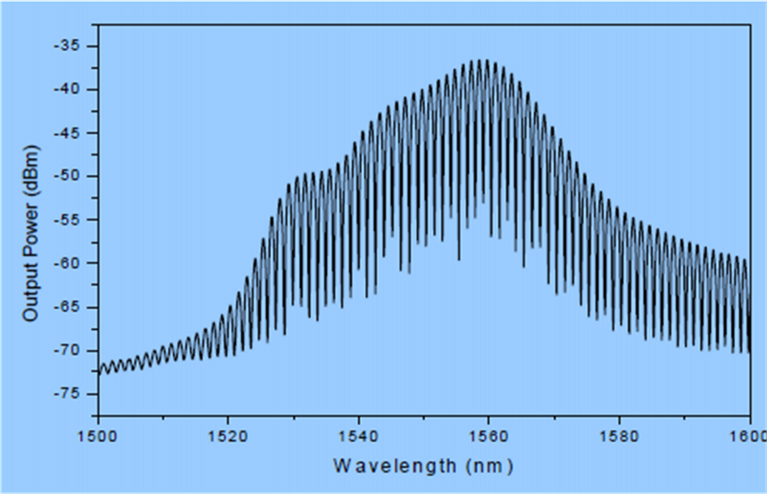Hi Steemians, today we will continue with the types of the fibers. Previous articles were related to History of Optical Fibers and What is Optical Fiber, Loss Mechanisms of Optical Fibers and we will give an application of the a Compact Fiber Laser System which is our work and can cut glass too.
Many optical fiber optics [1] have been developed for fiber laser systems. Although general structures have similar properties, according to the field of usage, the features show differences. In this case, single-mode fibers, multi-mode fibers, double clad fibers and PM-fibers which protects polarization will be described. These products are also used in all type fiber laser systems.
---- Single-Mode Fibers
Single-mode fibers are the most common type of optical beams used among optical beams. For wavelengths from 300nm to 3μm the core size can vary between 3 - 20μm in terms of usage. Optical fibers with a diameter of 15μm and over have a Large Mode Area features. LMA optical fibers are usually used to transmit signals in high power laser systems also they can also be used to eliminate the pump source which shows multi-mode properties. When the size of the core of the fiber increases, Kerr-effect [2] which is a non-linear effect is reduced. The reason is the power of the unit which is proportional to Kerr effect is less in the larger core. Single-mode fibers can be doped using rare-earth materials such as Yb, Er, Th, Ho etc. That is to say, single-mode bellows can be used as a gain fiber. Generally these are used to increase the optical power in the segment of the pre-amplifier. Such gains are also referred to as core-pump booster systems. The quality of the light, which determines the focus of the single-mode beams, can progress without deterioration. This is why single-mode fibers which are used in the fiber laser systems, are highly preferred.
---- Multi-Mode Fibers
Multi-mode fibers [3] are usually used in high-power pump diodes. There are no importance about modes of high-power pump diodes. They can be used in places where single mode is not important. This type of fibers has advantage about great use in the transmission of high-power signals due to the size of the cores. Generally this type of fibers have 105μm core size and it changes up to double clad fibers' clad size.
---- Double-Cladding Fibers
In fiber lasers, the high power pump diodes is required to obtain more power. Today, although there are pump diodes that power up to 500W, this is impossible to couple the this power level into the single-mode. Therefore, approximately 50W pump diodes are used in the fiber laser amplifiers. This level power are transferred usually fibers which has a core diameter 105 μm. Diameter of the core can reach up to 600μm when the level of pump power straight to 500W. However, single-mode fiber which is used to enhance your signal, can be up to 15μm core size, according to V-parameter [4]. This is set by the NA parameter [5]. The core size of the fiber is needed to increase to decrease the NA-parameter. However, this solution make a complicated about remaining the light in the single-mode regime and the NA becomes approximately 0.05. At the below of this value, bending, splicing the two fibers are becoming very sensitive.
To solve small core problems double-clad fibers are developed [6]. While the pump is moving in the first clad the signal can travel through the core without turning multiple modes. Usually the first clad NA is 0.46, while the NA od the core is 0.07 (for core diameter 20μm). Because there was no problem in the multi-mode transmission for the pump.
When attention is paid to the first clad structure of the fibers (above figure), it is observed that it is a non-round structure. The purpose of this, pump light can effect rare-earth ions and helps you to get better absorption level from amplification. If it was exactly round, the modes supported by the pump, power would approach the zero level in the center of the fiber core. Therefore, this problem is solved by using non-circular structures.
According to the diameter of the first cladding, more pump access can be achieved into the fiber. However, in this case it is necessary to use longer fibers. Because pump absorption is directly proportional to the rate of clad size. Longer fiber causes the non-linear effects, which are quite dominant in the fibers. This constitutes a major obstacle to narrowing the pulse which will be described in the other article.
The reason why you do not want the signal to go in a single mode is the parameter that determines the quality of the point to be processed and is specified as M2 [7]. The M2 is considered to be the ideal as “1” for the beam and if the this value increases from the “1”, the single-mode property of the light is reduced. Fiber laser has advantages over other laser types is also able to increase the power of the single mode.
---- Polarization Maintaining (PM) Fibers
Polarization of the light is determined by electric field. Electric field of light axis is called in two names, “fast” and “slow”. Because of the formation of the PM-fiber [8] the refractive index is different for these two components. One of them is transmitted slower than the other component. Therefore, we called them as “slow” and “fast”. These can be linear, round, elliptical, polar or non-polar from combinations. Protecting polarity has to be for single-mode. It is impossible to support polarization for all modes in the optical fiber. Purpose of the polarization maintaining fiber is transmission of the polarization property of the light to the end of the fiber optics by protecting the same polarization. This is also true for non-PM fibers, but such fibers are highly sensitive to environmental influences and are not susceptible to rapid changes even in the case of any slight bending or temperature changes. For non-PM fibers, the polarization extinction ratio is 0 dB which means that slow and fast axis has a same intensity. The reason is a random change into the non-PM fibers for polarization.
The reason for the separation of the axes slow and fast, is a principle called birefringence [9] for PM-fibers. According to this principle, in the fibers there are two different refractive index. These two are different refractive index cause the axes travel in different time into the fiber. If one of the axes is slow, it is subjected to a higher refracitve index besides If one of the axes is fast and it is subjected to a lower refracitve index. This refractive index difference is due to the stress points shown below.
According to these refractive indices, the axes interact with each other. The higher birefringence the value of an optical fiber, the less this effect is. We mean the birefringence is the value of difference between slow and fast indices.
B=nslow - nfast
B-birefringence, nslow-refractive index for slow axis, nfast-refractive index for fast axis,
One other parameter for how well the PM-fiber protects the polarity is the beat length [10] parameter. It is a parameter that indicates how long the elongated axes are interacting with each other along the optical path. Beat length which depends on the wavelength, is a parameter, and is inversely proportional to the birefringence parameter.
LB = λ/B
LB-beat length, λ-center wavelength
The beat length values of the optic fibers that protect the polarity can be measured with an easy mechanism. For this, both axes (slow and fast) will be sent into the PM-fiber which is to be tested. Having a broad spectrum will reduce the error in measurement because of the property of the beat length, axes will interact with each other and there will be an interference [11]. When the optical spectrum analyzer output is viewed, the formation of these inputs can be observed.

LB = ΔλL/λ
In this formula, the Δλ fringe spacing, λ center wavelength, the L length of the PM-fiber.
If you enjoyed this post, feel free to Upvote, Follow and Resteem.
All images used in this post are my own. You are welcome to use them with credit.
References are contained in Hyperlinks throughout the article. Everything else is my personal work.






Congratulations! This post has been upvoted from the communal account, @minnowsupport, by onderakcaalan from the Minnow Support Project. It's a witness project run by aggroed, ausbitbank, teamsteem, theprophet0, someguy123, neoxian, followbtcnews, and netuoso. The goal is to help Steemit grow by supporting Minnows. Please find us at the Peace, Abundance, and Liberty Network (PALnet) Discord Channel. It's a completely public and open space to all members of the Steemit community who voluntarily choose to be there.
If you would like to delegate to the Minnow Support Project you can do so by clicking on the following links: 50SP, 100SP, 250SP, 500SP, 1000SP, 5000SP.
Be sure to leave at least 50SP undelegated on your account.